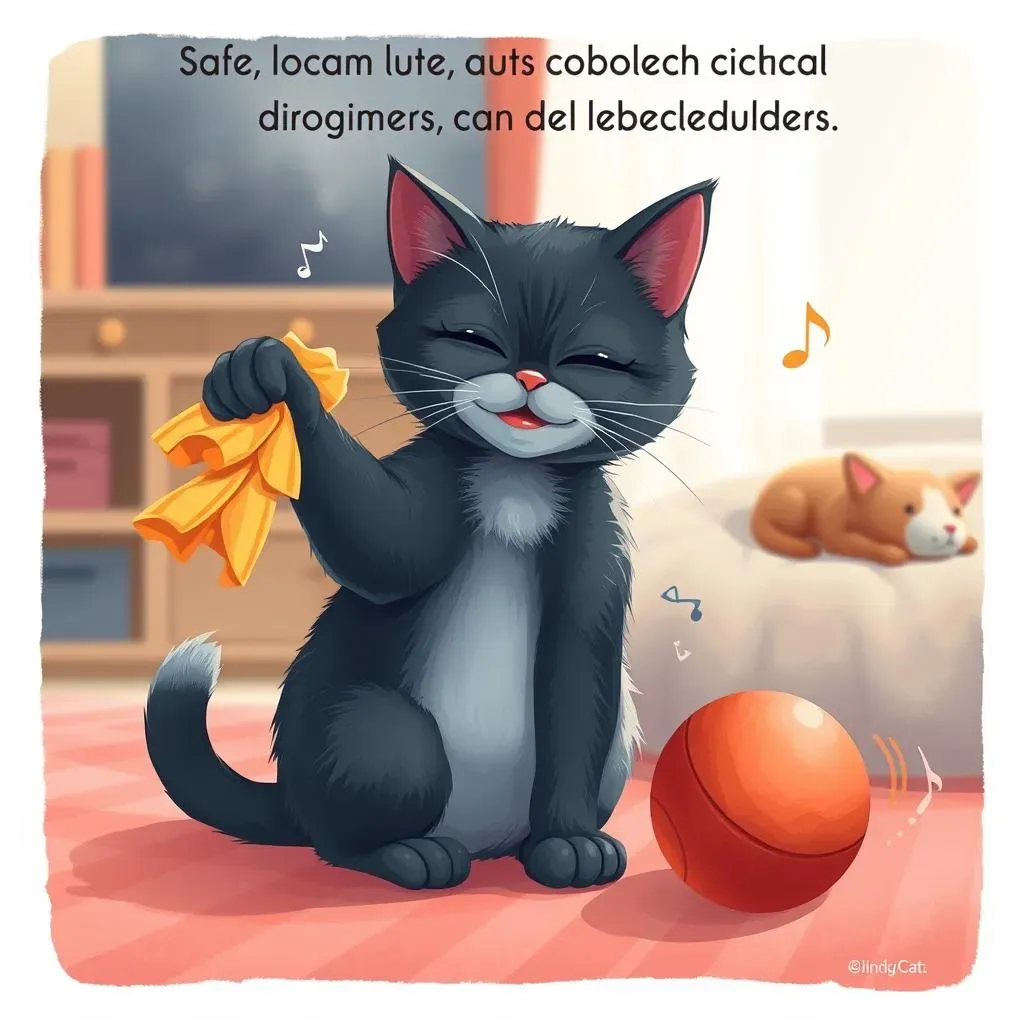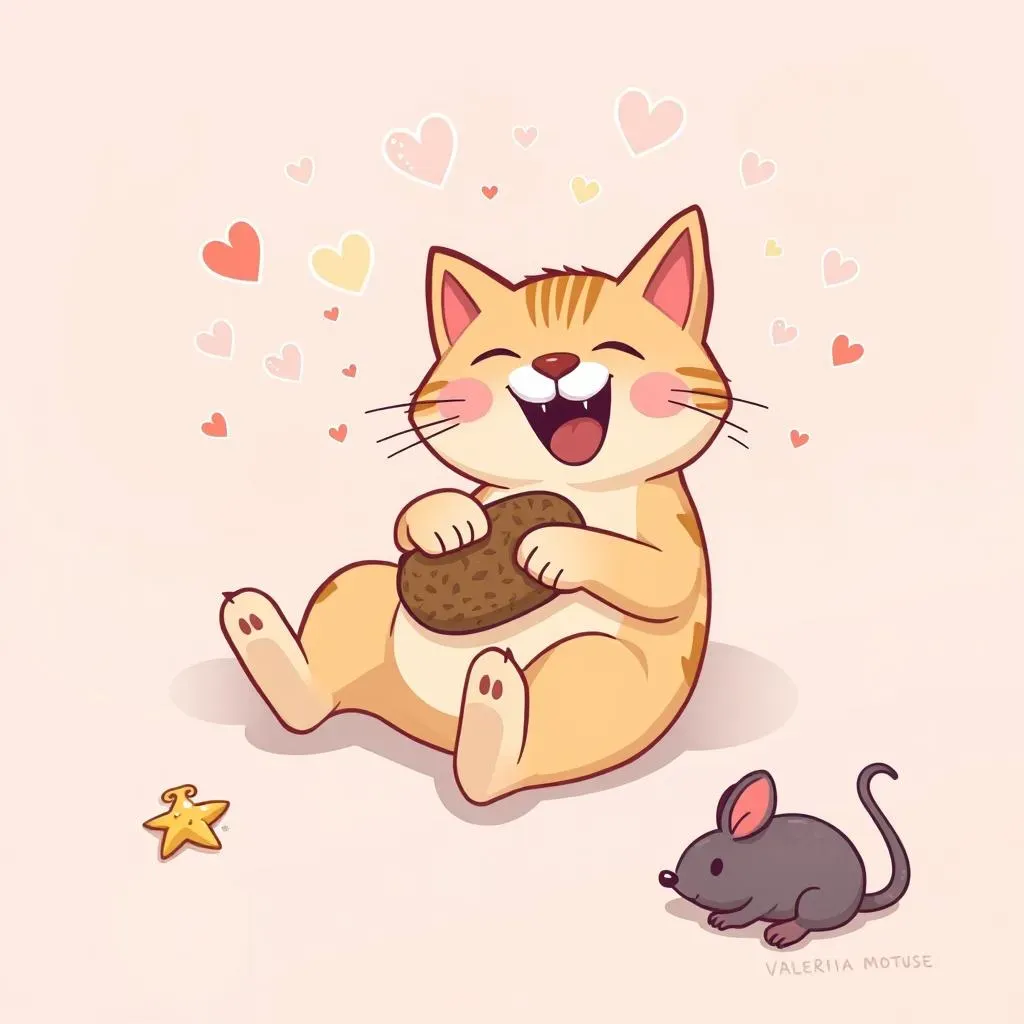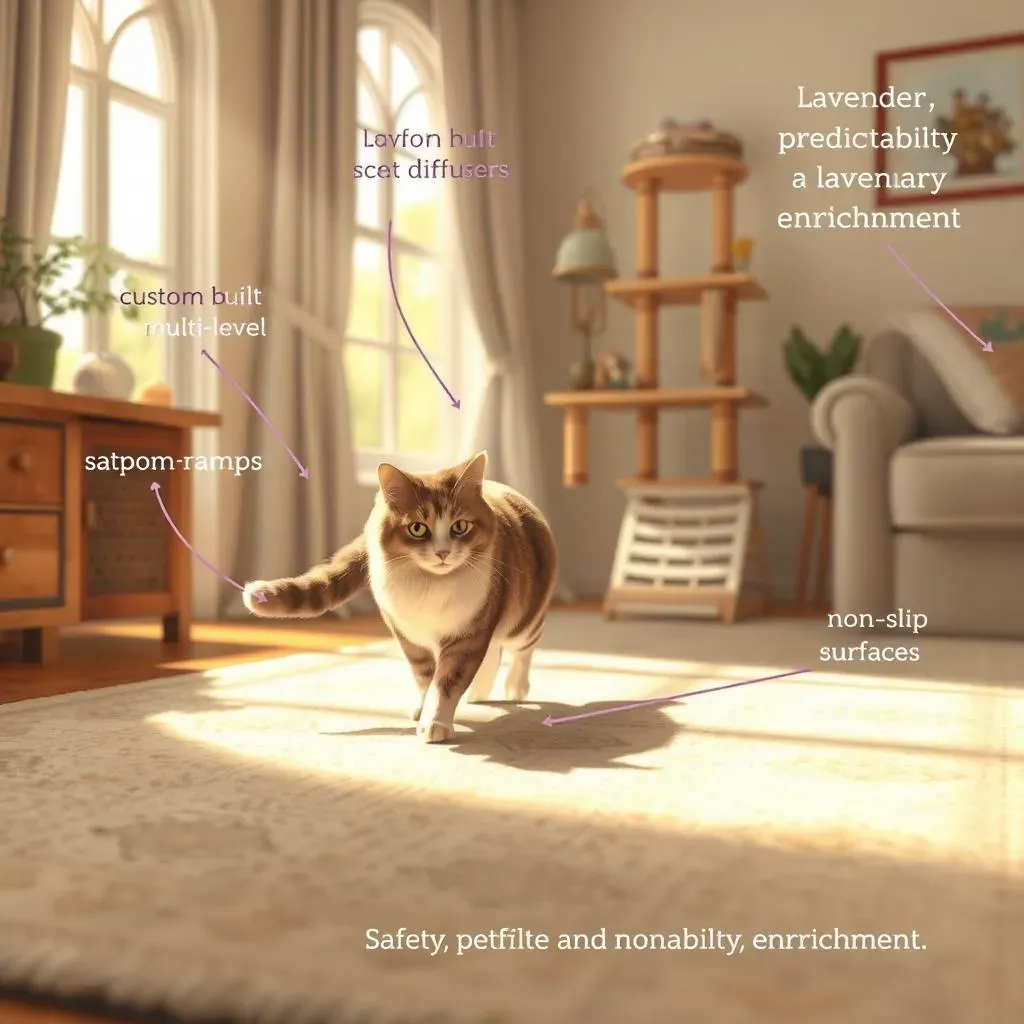Table of Contents
Blind cats navigate the world with grace and agility, relying on their heightened senses of hearing, smell, and touch. Providing them with stimulating and engaging toys is crucial for their mental and physical well-being. Finding the best toys for blind cats doesn't have to be a shot in the dark. This article sheds light on how to select toys that cater to their unique needs, turning playtime into a rewarding experience. We'll explore a range of sensory-rich options, from crinkly balls and jingle toys to catnip-infused delights, ensuring your feline friend stays active, entertained, and connected to their surroundings. So, let’s dive in and discover how to create a stimulating and joyful environment for your beloved blind companion, because every cat deserves a purr-fect playtime, regardless of their vision.
Sensory Playtime: Choosing the Best Toys for Blind Cats

Sensory Playtime: Choosing the Best Toys for Blind Cats
Understanding Sensory Needs
So, your feline friend can't see? No sweat! Cats are masters of adaptation, and a blind cat is no exception. They just need a little help navigating their world. When it comes to toys, think about amplifying their other senses. We’re talking sound, smell, and touch. Forget about those fancy laser pointers; instead, focus on toys that engage their ears and noses. It’s all about creating an environment where they feel confident and can explore without bumping into every piece of furniture.
Consider how your cat interacts with their surroundings. Do they love to bat at things, or are they more of a cuddler? This will help you choose toys that match their personality. A playful cat might enjoy toys that roll and make noise, while a more relaxed cat might prefer a soft, scented toy to snuggle with. Remember, the goal is to stimulate their senses and provide them with a sense of security and fun. It's like setting up a sensory playground tailored just for them!
What toys do blind cats like best?
- Crinkle toys
- Jingle balls
- Catnip toys
Toy Safety and Considerations
Before you go wild buying every noisy toy you can find, let’s talk safety. Blind cats rely heavily on their other senses, so it's crucial to choose toys that are safe and won't pose a hazard. Avoid anything with small, detachable parts that could be swallowed. Size matters too; toys should be large enough that they can't be accidentally inhaled. Always supervise playtime, especially when introducing a new toy, just to make sure your cat interacts with it safely.
Think about the materials the toys are made from. Opt for non-toxic, durable materials that can withstand some serious playtime. Regularly inspect toys for wear and tear, and replace them as needed. Creating a safe play environment is just as important as choosing the right toys. After all, we want our feline friends to have fun without any unexpected trips to the vet!
Here's a quick safety checklist:
- No small, detachable parts
- Appropriate size to prevent inhalation
- Non-toxic materials
- Regular inspection for wear and tear
Crinkle, Jingle, and Delight: SoundBased Toys for Blind Cats

Crinkle, Jingle, and Delight: SoundBased Toys for Blind Cats
The Magic of Crinkle Toys
Oh, the simple crinkle toy! Seriously, these are like catnip for the ears. The sound of that crinkling material mimics the rustling of leaves or the scuttling of prey, which instantly grabs a blind cat's attention. They’re lightweight, easy to bat around, and provide auditory stimulation that keeps them engaged. Plus, they're usually pretty cheap, so you can stock up without breaking the bank. I remember when I first gave my friend’s blind cat, Hemi, a crinkle ball – he went absolutely bonkers! He chased it all over the room, ears perked up, having the time of his life. It was like he could "see" the toy with his ears.
Jingle Balls: A Symphony of Play
Jingle balls are another fantastic option for blind cats. That gentle ringing sound is like a beacon, guiding them to the toy. Look for jingle balls that are appropriately sized – not too small that they could be a choking hazard, but not so large that they're difficult to bat around. Some jingle balls come with holes, allowing your cat to smell the enticing scent of catnip inside, adding an extra layer of sensory stimulation. It's like a party in a ball!
Here's a comparison of crinkle toys and jingle balls:
Toy Type | Sound Quality | Durability | Best For |
|---|---|---|---|
Crinkle Toys | Rustling, crinkling | Moderate | Active, playful cats |
Jingle Balls | Ringing, chiming | High | Cats who enjoy tracking sounds |
Safety Tips for Sound-Based Toys
Safety first, always! When it comes to sound-based toys, make sure the bells or rattles are securely enclosed within the toy. You don't want your cat accidentally swallowing a small bell. Also, be mindful of the volume. Some toys can be quite loud, which might be overwhelming for some cats. Opt for toys with a softer, gentler sound. And as with any toy, always supervise your cat during playtime to ensure they're playing safely and not trying to dismantle their new favorite jingle ball.
I once made the mistake of buying a super loud jingle ball, and my cat hid under the bed for hours! Lesson learned: gentler sounds are the way to go. Always prioritize your cat's comfort and safety when choosing toys.
Scentsational Fun: Catnip and SmellEnhanced Toys

Scentsational Fun: Catnip and SmellEnhanced Toys
The Allure of Catnip
Alright, let's talk catnip! It's like the ultimate party drug for cats (totally safe, though!). Catnip toys are a no-brainer for blind cats because they tap directly into their sense of smell. The strong, minty aroma is irresistible, sparking playful energy and curiosity. You can find catnip in various forms: stuffed inside toys, as a spray, or even as dried leaves you can sprinkle around. Some cats go wild, rolling around and batting at the toy, while others become mellow and relaxed. It's always entertaining to see their individual reactions.
Scented Toys Beyond Catnip
While catnip is the king of scents, don't underestimate other appealing smells! Some cats are drawn to valerian root, which has a similar effect to catnip but with a slightly different aroma. You can also find toys infused with honeysuckle or even simple, comforting scents like lavender. Experiment to see what your cat prefers. Just make sure any scented oils or sprays are pet-safe and non-toxic. A little aromatherapy can go a long way in making playtime more engaging!
Here are some alternative scents to consider:
- Valerian root
- Honeysuckle
- Lavender (in diluted, pet-safe forms)
DIY Scented Toys
Feeling crafty? You can easily make your own scented toys! Grab some fabric scraps, cotton stuffing, and your cat's favorite scent (catnip, valerian, etc.). Simply sew a small pouch, fill it with the stuffing and scent, and stitch it closed. You can even add a crinkly material inside for extra sensory stimulation. Homemade toys are a great way to customize the scent and size to your cat's preferences. Plus, it's a fun way to bond with your furry friend!
Quote of the day: "A cat's sense of smell is their superpower. Use it to create a world of fun!" - Dr. Whiskers (probably not a real doctor, but you get the idea)
Tips for Introducing Scented Toys
When introducing a new scented toy, start slowly. Let your cat sniff it and explore it at their own pace. Don't force them to play with it. You can also rub the toy on their favorite scratching post or bedding to transfer the scent and make it more familiar. If your cat doesn't seem interested at first, try again later. Sometimes it takes a little time for them to warm up to a new smell. And remember, a little catnip goes a long way! Don't overdo it, or your cat might become desensitized to the scent over time.
Troubleshooting: What if your cat isn't interested in catnip?
Possible Reason | Solution |
|---|---|
Genetics (some cats don't have the catnip gene) | Try valerian root or honeysuckle |
Too much exposure | Limit catnip playtime to short sessions |
Toy is old and scent has faded | Refresh the scent or replace the toy |
Beyond Toys: Creating an Enriched Environment for Blind Cats

Beyond Toys: Creating an Enriched Environment for Blind Cats
Safe Navigation Zones
so you've got the toy situation sorted, but what about the bigger picture? Creating a safe and predictable environment is key for a blind cat's confidence. Think about it: they rely on memory and spatial awareness to get around. Keep furniture in the same place, and avoid leaving clutter on the floor. It’s like setting up a mental map for them. I know it's tempting to rearrange things for a fresh look, but trust me, your cat will appreciate the consistency. Consider using scent markers, like a dab of lavender oil on specific pieces of furniture, to help them navigate. It's all about making their world as predictable and easy to navigate as possible.
Vertical Exploration
Just because your cat can't see doesn't mean they don't want to climb and explore! Vertical space is still super important for their well-being. Invest in a sturdy cat tree or create shelves that they can easily access. Make sure the surfaces are textured and non-slip, so they feel secure as they climb. Use sound cues, like tapping on the levels, to encourage them to explore. My friend built a custom cat tree for her blind cat, and it became his absolute favorite spot. He loved being up high, listening to the sounds of the house. It gave him a sense of security and control over his environment.
Here are some tips for creating accessible vertical spaces:
- Use textured, non-slip surfaces
- Provide ramps or steps for easy access
- Use sound cues to guide exploration
- Ensure the structure is sturdy and stable
The Power of Routine
Cats are creatures of habit, and this is especially true for blind cats. Establishing a consistent daily routine can do wonders for their confidence and well-being. Set regular feeding times, playtime sessions, and grooming appointments. This predictability helps them feel secure and reduces anxiety. It's like giving them a roadmap for their day. Plus, a consistent routine strengthens the bond between you and your cat. They learn to anticipate your actions and feel more connected to you. So, stick to a schedule, and watch your blind cat thrive in their predictable, loving environment.
Quote of the day: "Routine is the unseen guide for a blind cat's journey." - Some wise cat lover
Enriching the World of Your Blind Cat: Playtime and Beyond
Choosing the best toys for blind cats is more than just providing entertainment; it's about enriching their lives and fostering a deeper connection. By focusing on sound, scent, and texture, you can create a stimulating environment that encourages exploration and play. Remember, a happy cat is an engaged cat, and with the right toys and a little understanding, your blind feline can thrive and enjoy a fulfilling life full of purrs and playful pounces. So, go ahead and explore the options, experiment with different toys, and discover what brings the most joy to your unique and wonderful companion.